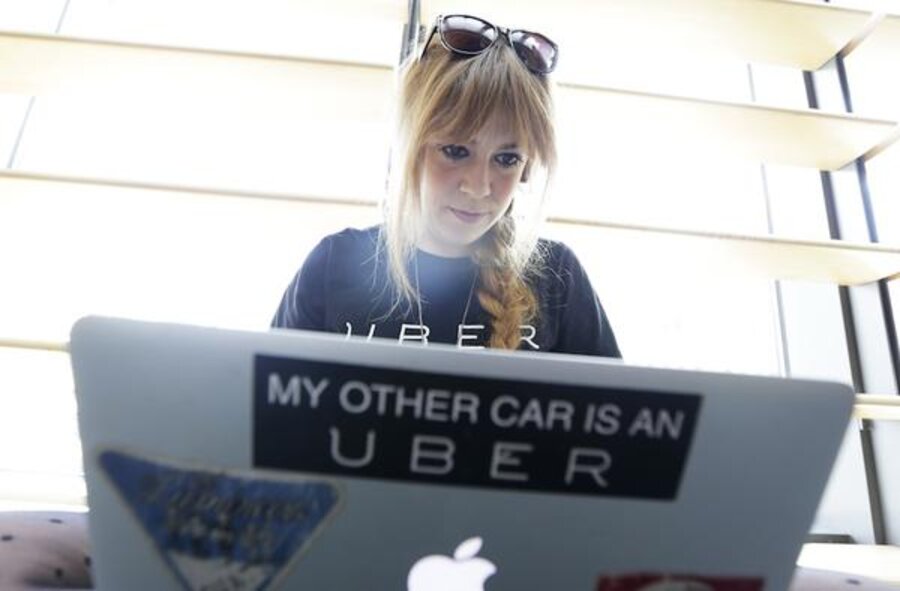Uber protests take new twist: Its own drivers are mad now
Loading...
| LOS ANGELES
The upstart ride-sharing company known as Uber has drivers out on the streets once more, protesting the company’s policies.
But this time, it’s not the yellow taxicab drivers who have been pushing back at the way Uber’s peer-to-peer digital application is undermining their more traditional model and regulations. Now, the voices being raised against the five-year-old, multibillion dollar company are the very non-professional drivers the firm relies on to ferry passengers in their own cars.
On Wednesday, Uber drivers in San Francisco, Los Angeles, New York, and London took to the streets to protest a range of concerns, among them price-cutting by Uber and the no-tipping policies which they say are unclear and deprive them of needed revenue. The groups have formed into at least three fledgling unions to push their list of demands.
The fact that these protests are happening speaks to the larger question of why Uber emerged in the first place, says Meredith Highsmith, an expert on transportation network companies such as Uber, at Texas A&M's Transportation Institute in College Station.
“This is speaking to a larger concern, which is there is a great demand from the public for a greater range of transportation choices,” she says.
Given the independent contractor business model used by Uber and other ride-sharing companies such as Lyft and Sidecar – and the fierce competition for business in this nascent sector – protests such as these are inevitable, suggests Maren Donovan, CEO of Zirtual, a company that provides virtual assistants for US-based companies.
“There is a kind of race to the bottom that will eventually be taken out on the drivers in this instance,” she says, because there is no employee structure to protect their interests.
If the company presents the model on a take-it-or-leave it basis with profitability as the main goal, then eventually there will be no more fat in the system, she says, “and you will see protests such as these from drivers who want livable wages.”
If Uber focuses solely on lower prices through lower wages, “quality will suffer,” says Peter Zaleski, economics professor at Villanova University in Philadelphia. Allowing tips could help Uber enjoy the best of both worlds, he says, adding that the incentive for tips promotes a high quality experience for riders.
Uber, for its part, says the single-swipe payment experience without the hassle of extra cash payments is one of its attractions for busy consumers. Beyond that, the company is not interested in negotiating with driver unions, but rather sees itself as empowering independent small-business owners.
According to Uber’s Lane Kassleman, head of communications for the Americas, only a tiny percentage of the company’s thousands of drivers worldwide participated in the protests. “We work with drivers one-on-one,” he says, adding that Uber’s drivers “don’t need a union representing their interests.”
But this industry is still in the process of inventing its new wheels, notes Susan Shaheen, an adjunct professor and co-director of the Transportation Sustainability Research Center at the University of California, Berkeley. Ridesourcing is not yet a professional service because it employs community drivers and their personal vehicles, she notes. Earlier this year, she co-authored a report on the various services.
“Ridesourcing will continue to evolve to address drivers' growing concerns over fares and tipping,” she says via e-mail. Other services such as Lyft provide a way for riders to tip, she notes.
“It is important to understand the sharing economy's opportunities and challenges, as it is a growing industry with potential to shift consumer behavior toward more sustainable living and mobility,” says Dr. Shaheen. However, she adds, more data and research are needed to increase understanding of ridesourcing and other shared-use mobility modes such as carsharing, bikesharing, and car and vanpooling.





